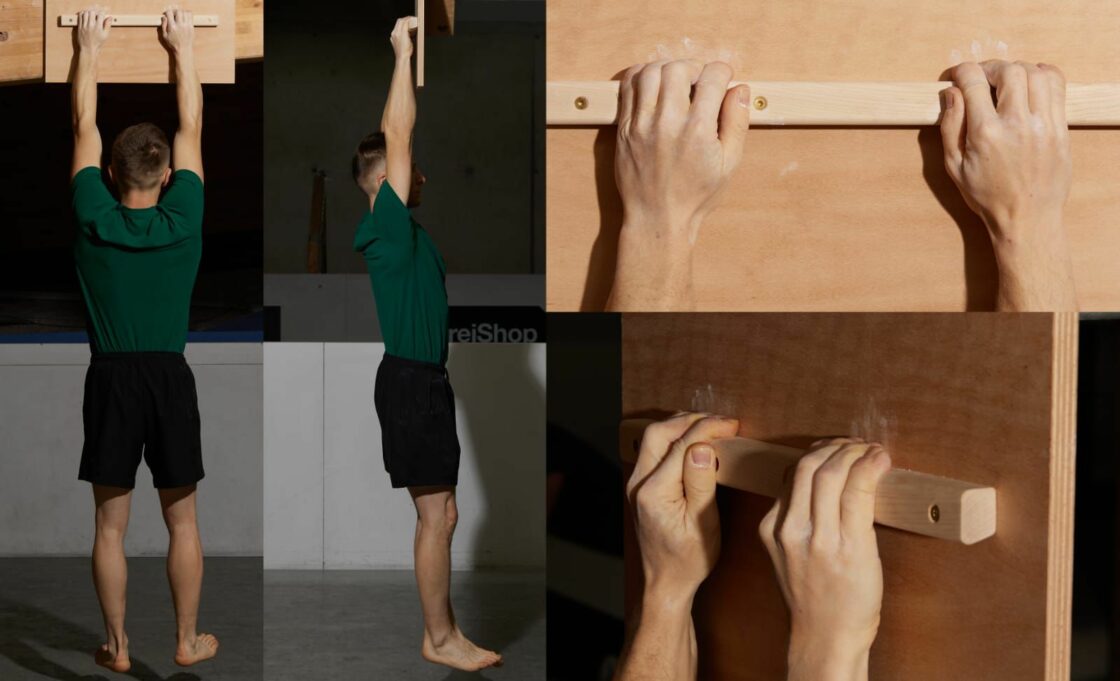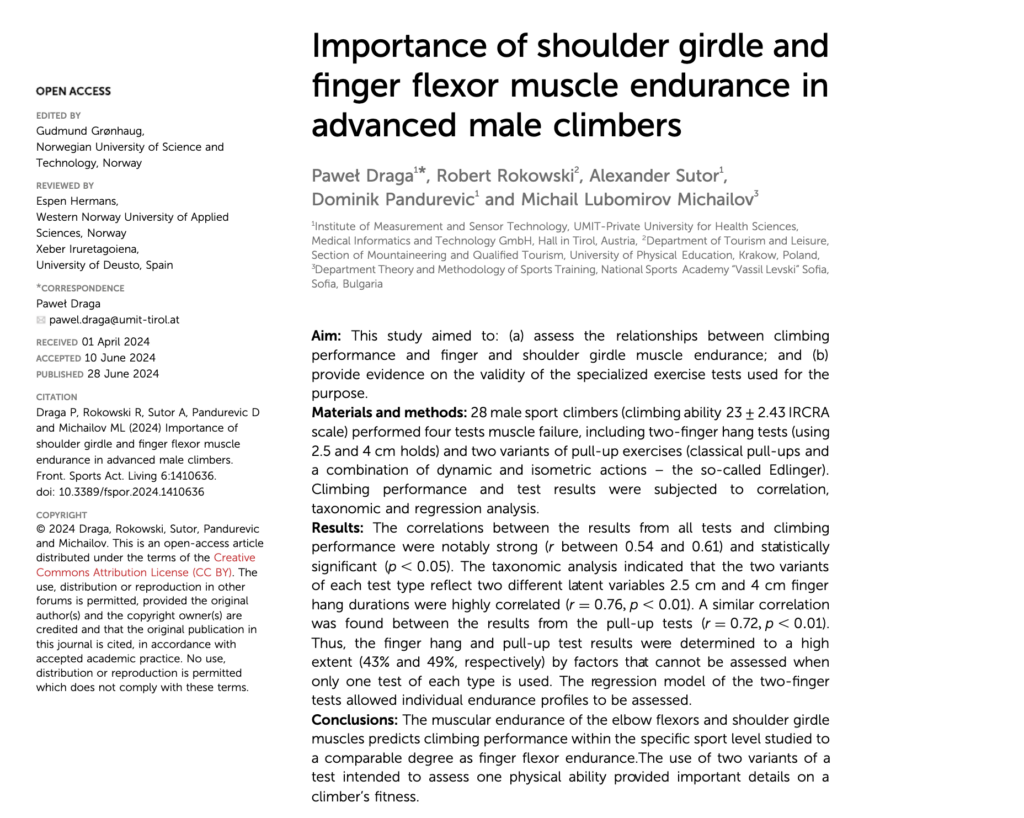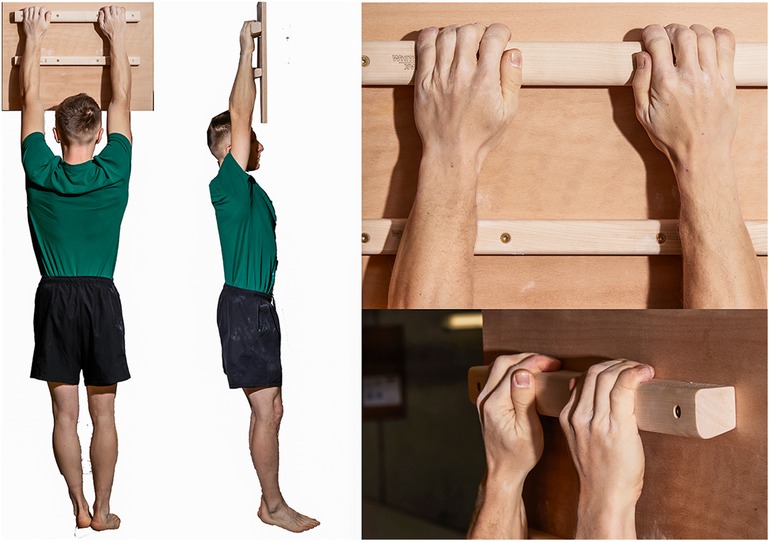€0
The importance of shoulder girdle and toe flexor muscle strength in advanced climbers: Research by Dr. Pavel Draga

The importance of shoulder girdle and toe flexor muscle strength in advanced climbers: Research by Dr. Pavel Draga
If you’ve ever wondered how broadly grip strength affects your maximum climbing performance, we have an interesting article for you. Dr. Pavel Draga of UMIT’s Hall in Tirol, conducted a detailed study of the issue. We were pleased to provide custom campus slats that allowed us to conduct this research.
The full text of the publication can be found here. Below, we will present only the most important findings of the research in an accessible format and our own practical conclusions.
Introduction to the publication

Analysis of results
Dr. Pavel Draga’s research clearly indicates that both the strength of the finger flexor muscles and the muscles of the shoulder girdle and elbow flexors play a key role in the climbing level of climbers. Climbing level, expressed according to the IRCRA scale (mean 23 ± 2.43), was strongly correlated with the results of the small-grip overhang, medium-grip overhang and pull-up bar tests.
The analysis showed that different variations of the tests (e.g., duration of the 2.5 cm and 4 cm overhangs) reflected different aspects of muscular endurance. The duration of a two-finger overhang on 2.5 cm and 4 cm holds was strongly correlated (r=0.76, p<0.01) with climbing level. A similar correlation was observed in the results of pull-up tests (r=0.72, p<0.01).
Research conclusions
Based on the research shown, a strong correlation can be inferred between climbing level and overhang time and pull-up skill. The strength of the finger flexor muscles and the shoulder girdle and elbow flexor muscles play a key role in climbing performance.
Practical conclusions
Based on Dr. Paul Draga’s research, several key practical conclusions can be drawn about climbing training.
- Even strength development: Research indicates that both the strength of the finger flexor muscles and the shoulder girdle and elbow flexor muscles are important for climbing performance. That’s why it makes sense to focus on developing these muscle groups evenly.
- Grip strength and endurance training: Grip strength can be effectively trained on a grip-table. Regular exercise on the grip-table, using grips of different depths, can significantly improve the strength of the finger flexor muscles. Training on the campus board, which includes a variety of pull-ups and dynamic movements, develops the strength of the shoulder girdle and elbow flexor muscles, as well as improving dynamic strength and coordination.
- Pull-up exercises: Incorporating a variety of pull-up variations into your training, including classic pull-ups and combinations of dynamic and isometric exercises (e.g., Edlinger), allows for comprehensive development of muscular endurance.
- Monitoring progress: Regularly testing your abilities on different grips and exercise variations allows you to monitor your progress and customize your training program.
- Training variety: It is worth introducing variety in training to develop different aspects of muscular endurance and avoid stagnation. Combining exercises for grip strength, shoulder girdle strength and elbow flexors ensures comprehensive physical development.
In conclusion, to improve your climbing performance, you should pay attention to the comprehensive development of grip strength, shoulder girdle muscle strength and elbow flexors. You can find a variety of equipment dedicated to the development of grip strength such as grip boards, grips and bars used in the study at whiteoak.co.uk

